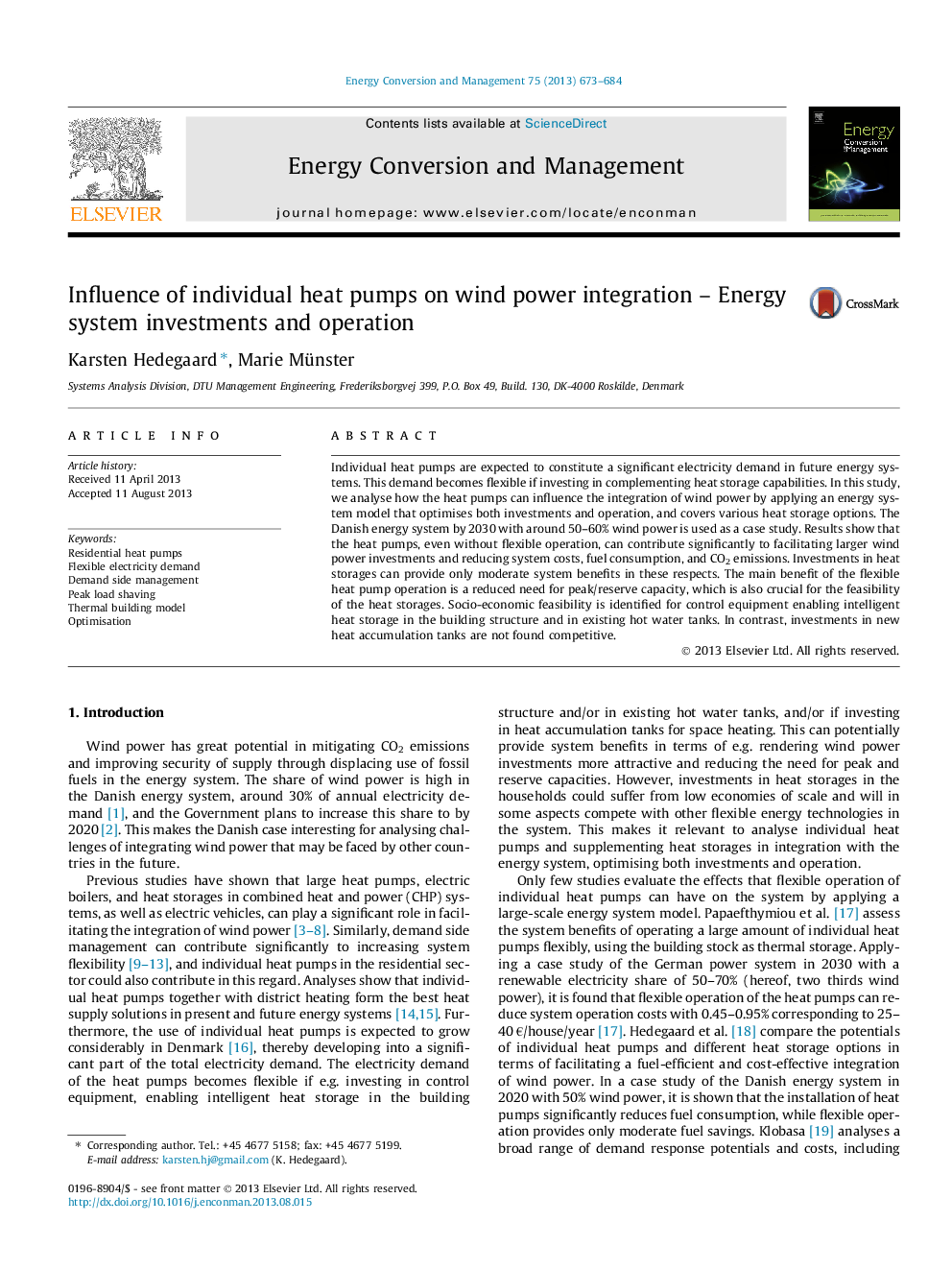| Article ID | Journal | Published Year | Pages | File Type |
|---|---|---|---|---|
| 7166518 | Energy Conversion and Management | 2013 | 12 Pages |
Abstract
Individual heat pumps are expected to constitute a significant electricity demand in future energy systems. This demand becomes flexible if investing in complementing heat storage capabilities. In this study, we analyse how the heat pumps can influence the integration of wind power by applying an energy system model that optimises both investments and operation, and covers various heat storage options. The Danish energy system by 2030 with around 50-60% wind power is used as a case study. Results show that the heat pumps, even without flexible operation, can contribute significantly to facilitating larger wind power investments and reducing system costs, fuel consumption, and CO2 emissions. Investments in heat storages can provide only moderate system benefits in these respects. The main benefit of the flexible heat pump operation is a reduced need for peak/reserve capacity, which is also crucial for the feasibility of the heat storages. Socio-economic feasibility is identified for control equipment enabling intelligent heat storage in the building structure and in existing hot water tanks. In contrast, investments in new heat accumulation tanks are not found competitive.
Keywords
Related Topics
Physical Sciences and Engineering
Energy
Energy (General)
Authors
Karsten Hedegaard, Marie Münster,
